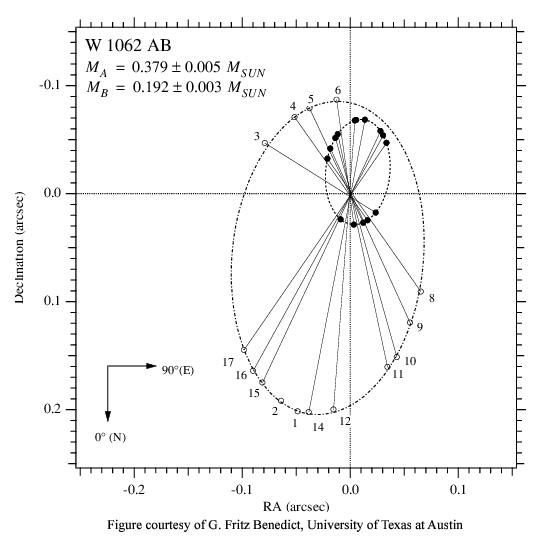3.4 Combining FGS Modes Determining Stellar Masses
Stellar mass determination is essential for many astronomical studies: star formation, stellar evolution, calibrating the mass/luminosity function, determining the incidence of stellar duplicity, and the identification of the low-mass end of the main sequence, for example.
The combination of Position mode and Transfer mode observations is an effective means to derive a full orbital solution of a binary system. Wide-angle astrometry from a multi-epoch Position mode program can be used to measure the parallax, proper motion and reflex motion of a binary system. High angular resolution Transfer mode observations can be used to determine the relative orbit and differential photometry of the components. Figure 3.4 illustrates the benefit of this technique as applied to the low mass binary system Wolf 1062 (Benedict et al. 2001). The small inner orbit of the primary star was determined from Position mode measurements of the primary’s position relative to reference field stars. The large orbit of the secondary low mass companion was derived from Transfer mode observations of the binary, which at each epoch yields the system separation and position angle. Combining these data allows one to locate the system barycenter and thereby compute the relative mass of each component. And with the parallax known (from the Position mode data), the total system mass, and hence the mass of each component, can be determined.
